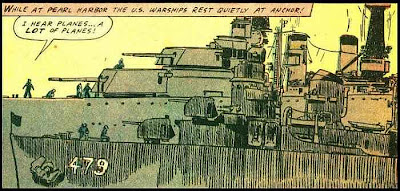It is always a bit of a thrill to read an article that covers a facet of the 1930s or 1940s which I'm not aware of, which made this Salon article on the 1941 United States oil embargo against Japan fascinating. To summarize for those unfamiliar with it, in 1941 before the Pearl Harbor attack United States President Franklin D. Roosevelt imposed a freeze on Japanese assets within the United States, which would require permits to be issued prior to any sale of goods taking place to Japan. As Japan relied heavily upon United States oil exports to meet its fuel needs, particularly for its military, this action represented a significant risk to Japan's ability to continue its on-going war in China at the time.
The ambiguity comes in regarding how the oil embargo was imposed and the role of Dean Acheson, pictured above, in creating that oil embargo. As Assistant Secretary of State at the time Acheson had an unusual opportunity to shape United States policy, while the President was in Newfoundland having a secret conference with Winston Churchill, British Prime Minister, Acheson had near total authority to decide if any licenses would be issued to Japan to allow the purchase of oil. He chose to not issue any such licenses, imposing an effective oil embargo on Japan and starting the chain of concerns that led to the Pearl Harbor attack on the United States in December 1941.
The question that needs to be asked though is this - did FDR know that Acheson was going to take this action and allowed it or was he surprised by the action and left it in place to avoid appearing weak?
This is not an easy question to answer, several sources claim that Acheson acted on his own and FDR was not involved in the choice, he wanted to avoid war. However one source I checked claimed that FDR did know and, more critically, a close friend of FDR's was in the State Department and had access to warn FDR if Acheson had been acting without approval.
My research into FDR has shown when it came to foreign policy he seemed to like having a distance between himself and certain actions, but was very willing to engage when needed in quite aggressive action. The theory that seems most likely to me is FDR was aware of the oil embargo being implemented by this indirect means and supported it, to see what impact it would have on Japan. If it turned out to be far too dangerous he'd be able to then retract what Acheson did and state Acheson had gone "too far" with his authority.
But we won't ever know - this was one of the items that there simply aren't clean records or sources to document. Considering this policy can be directly linked to Japan's attack on Pearl Harbor, it has relevance.
Sources: Salon article on this topic, Wikipedia on Dean Acheson, State Department page on Acheson, Google Books scan of "An Introduction to the Causes of War" by Greg Cashman & Leonard C. Robinson, Google Books scan of "The History of American Foreign Policy from 1895" by Jerald A. Combs

































































